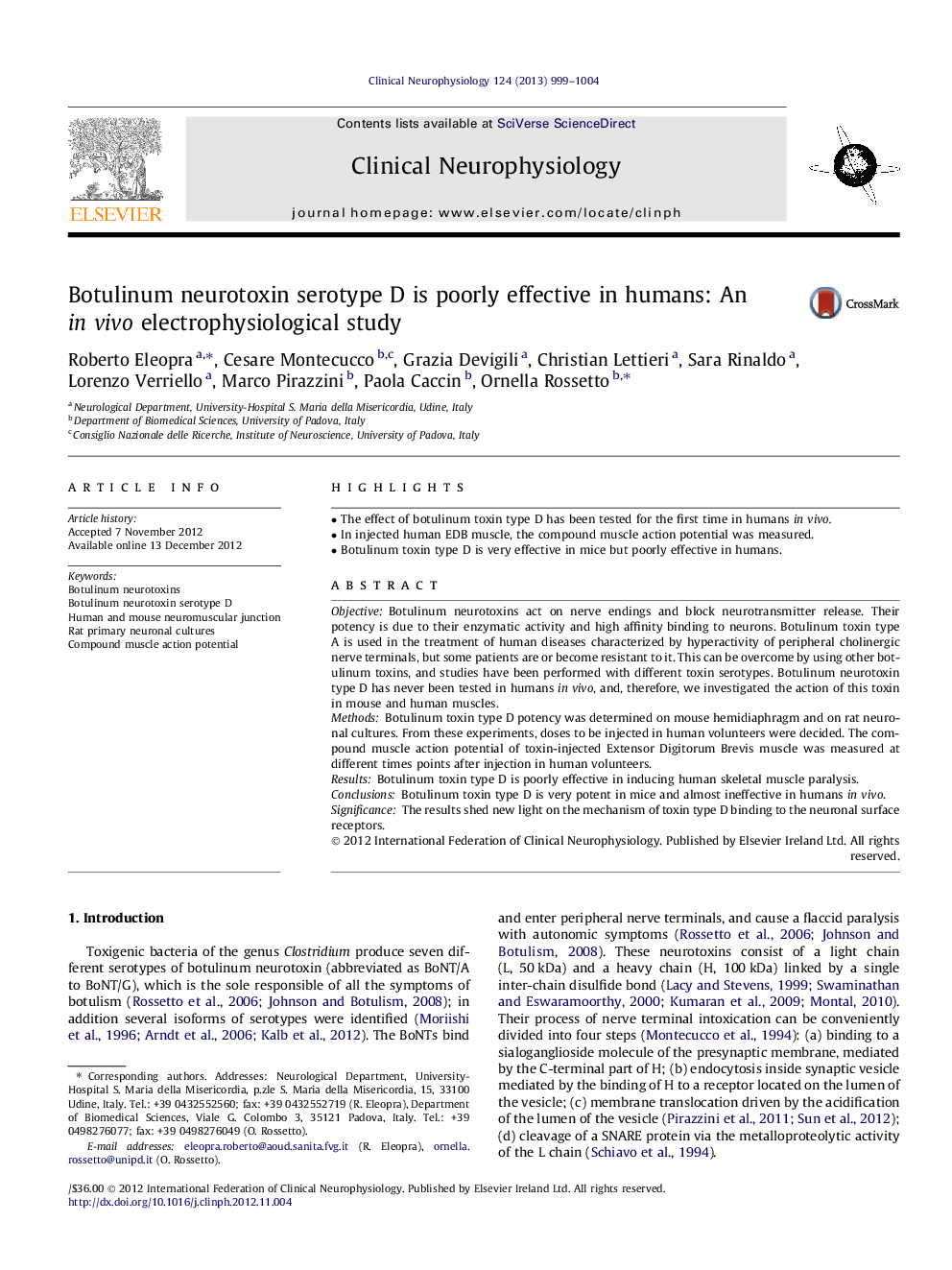| Article ID | Journal | Published Year | Pages | File Type |
|---|---|---|---|---|
| 3044338 | Clinical Neurophysiology | 2013 | 6 Pages |
ObjectiveBotulinum neurotoxins act on nerve endings and block neurotransmitter release. Their potency is due to their enzymatic activity and high affinity binding to neurons. Botulinum toxin type A is used in the treatment of human diseases characterized by hyperactivity of peripheral cholinergic nerve terminals, but some patients are or become resistant to it. This can be overcome by using other botulinum toxins, and studies have been performed with different toxin serotypes. Botulinum neurotoxin type D has never been tested in humans in vivo, and, therefore, we investigated the action of this toxin in mouse and human muscles.MethodsBotulinum toxin type D potency was determined on mouse hemidiaphragm and on rat neuronal cultures. From these experiments, doses to be injected in human volunteers were decided. The compound muscle action potential of toxin-injected Extensor Digitorum Brevis muscle was measured at different times points after injection in human volunteers.ResultsBotulinum toxin type D is poorly effective in inducing human skeletal muscle paralysis.ConclusionsBotulinum toxin type D is very potent in mice and almost ineffective in humans in vivo.SignificanceThe results shed new light on the mechanism of toxin type D binding to the neuronal surface receptors.
► The effect of botulinum toxin type D has been tested for the first time in humans in vivo. ► In injected human EDB muscle, the compound muscle action potential was measured. ► Botulinum toxin type D is very effective in mice but poorly effective in humans.
